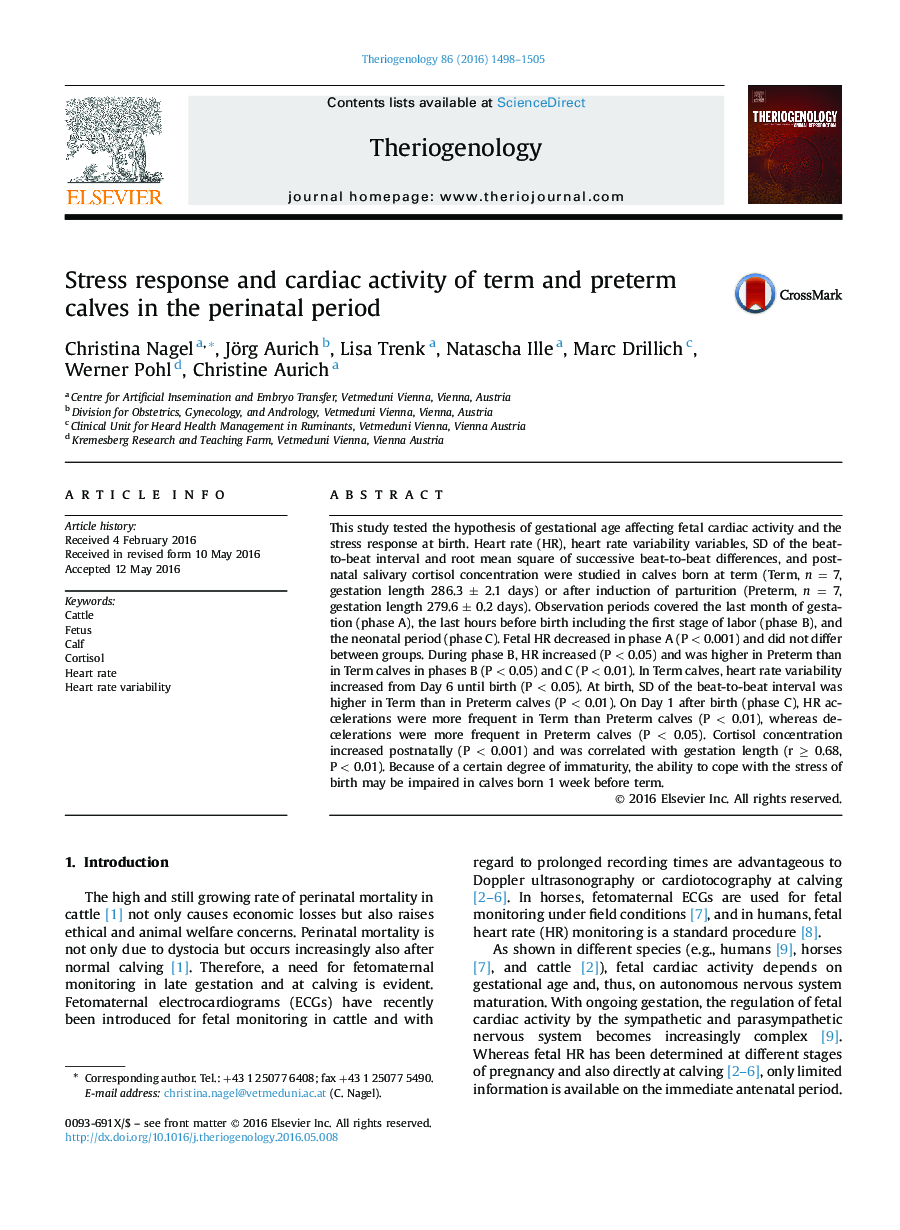| کد مقاله | کد نشریه | سال انتشار | مقاله انگلیسی | نسخه تمام متن |
|---|---|---|---|---|
| 2094687 | 1401371 | 2016 | 8 صفحه PDF | دانلود رایگان |
This study tested the hypothesis of gestational age affecting fetal cardiac activity and the stress response at birth. Heart rate (HR), heart rate variability variables, SD of the beat-to-beat interval and root mean square of successive beat-to-beat differences, and postnatal salivary cortisol concentration were studied in calves born at term (Term, n = 7, gestation length 286.3 ± 2.1 days) or after induction of parturition (Preterm, n = 7, gestation length 279.6 ± 0.2 days). Observation periods covered the last month of gestation (phase A), the last hours before birth including the first stage of labor (phase B), and the neonatal period (phase C). Fetal HR decreased in phase A (P < 0.001) and did not differ between groups. During phase B, HR increased (P < 0.05) and was higher in Preterm than in Term calves in phases B (P < 0.05) and C (P < 0.01). In Term calves, heart rate variability increased from Day 6 until birth (P < 0.05). At birth, SD of the beat-to-beat interval was higher in Term than in Preterm calves (P < 0.01). On Day 1 after birth (phase C), HR accelerations were more frequent in Term than Preterm calves (P < 0.01), whereas decelerations were more frequent in Preterm calves (P < 0.05). Cortisol concentration increased postnatally (P < 0.001) and was correlated with gestation length (r ≥ 0.68, P < 0.01). Because of a certain degree of immaturity, the ability to cope with the stress of birth may be impaired in calves born 1 week before term.
Journal: Theriogenology - Volume 86, Issue 6, 1 October 2016, Pages 1498–1505
